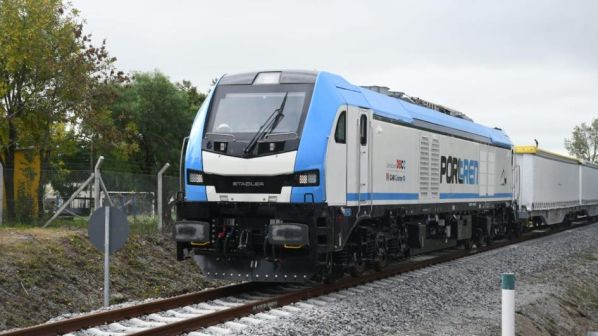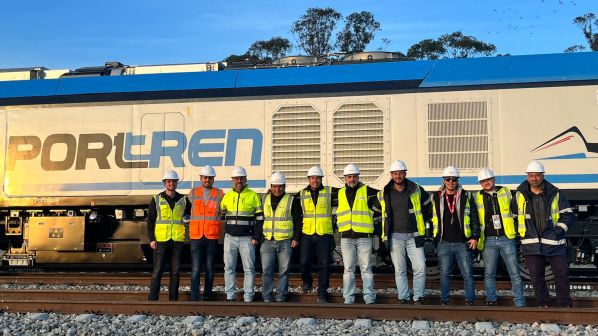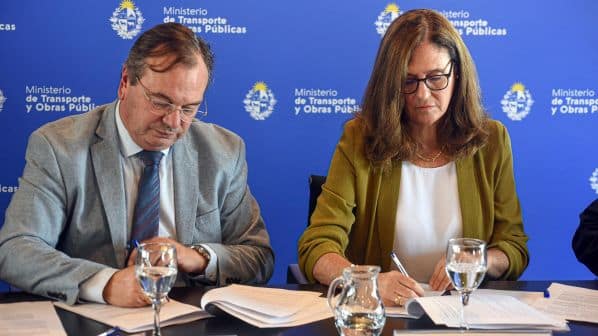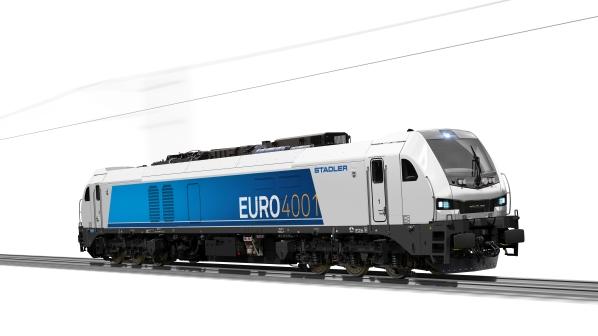URUGUAY celebrated the official opening of the Central Railway, the 273km upgraded north-south line from Paso de Los Toros to the port of Montevideo, on April 16.
The president of Uruguay, Mr Luis Lacalle Pou, the minister of transport and public works, Mr José Luis Falero, and under-secretary of transport, Mr Juan José Olaizola, took part in a ribbon-cutting ceremony at Cardal station in the department of Florida, where they witnessed an 18-wagon train loaded with cellulose make the inaugural journey on the line.
“Without a doubt, today is a day that transcends and marks an important milestone in the country,” Falero says. “It is a day when the railway is reactivated in Uruguay, with different conditions than what we were used to.”
Groundbreaking on the project took place in May 2019 and it involved the rehabilitation of the 273km line, which is double track for the first 26km from Montevideo and single track thereafter with 12 passing loops. Work included laying 343km of new track while the infrastructure has been rebuilt to European standards, the Ministry of Transport said in a statement, including the use of welded rail and concrete sleepers. The line is suitable for 80km/h freight trains with a maximum axleload of 22.5 tonnes.

The line will primarily be used cellulose pulp and chemical products to the port of Montevideo from Finnish forestry company UPM-Kymmene’s second plant, UPM 2, and is expected to carry up to 4 million tonnes of freight per year. UPM signed a 25-year contract with a consortium of Christopherson Group, Cointer Concesiones and DB International to operate the rail freight service, and design and maintain wagons and locomotives in 2020.
The line will also be used by passenger services between Montevideo and 25 de Agosto. French engineering consultancy Setec agreed to conduct a feasibility study for the introduction of hydrogen-based passenger services on the line last month.
Infrastructure work was carried out by the Grupo Vía Central and Consorcio Constructor del Ferrocarril Central (CCFC) consortia, both made up of Uruguayan companies Saceem and Berkes, NGE, France, and Sacyr, Spain. As well as the railway rehabilitation, work included associated civil engineering work, such as cuttings, bridges, overbridges and upgrades to rural roads. More than 3500 people worked on the project, of which 90% were Uruguayan.
The consortium will also maintain the line for 21 years.
A consortium of CAF Signalling and Revenga Smart Solutions has installed ERTMS Level 1 on the railway. This includes 10 electronic interlockings, 20 object controllers, 175 level crossing systems, local operating stations and an operations control centre. CAF Signalling also supplied onboard equipment for seven Euro4001 2.8MW diesel-electric locomotives supplied by Stadler. These were built at the manufacturer’s plant in Valencia, Spain, under a contract signed in 2020 with Portren, which is owned by Christopherson and Cointer Concesiones.
The project is estimated to have cost $US 2bn. The Inter-American Development Bank (IDB) agreed a $US 536m financing package for the project in 2019, which was followed by another $US 250m package in 2022.
For detailed data on South American railway projects, subscribe to IRJ Pro.




